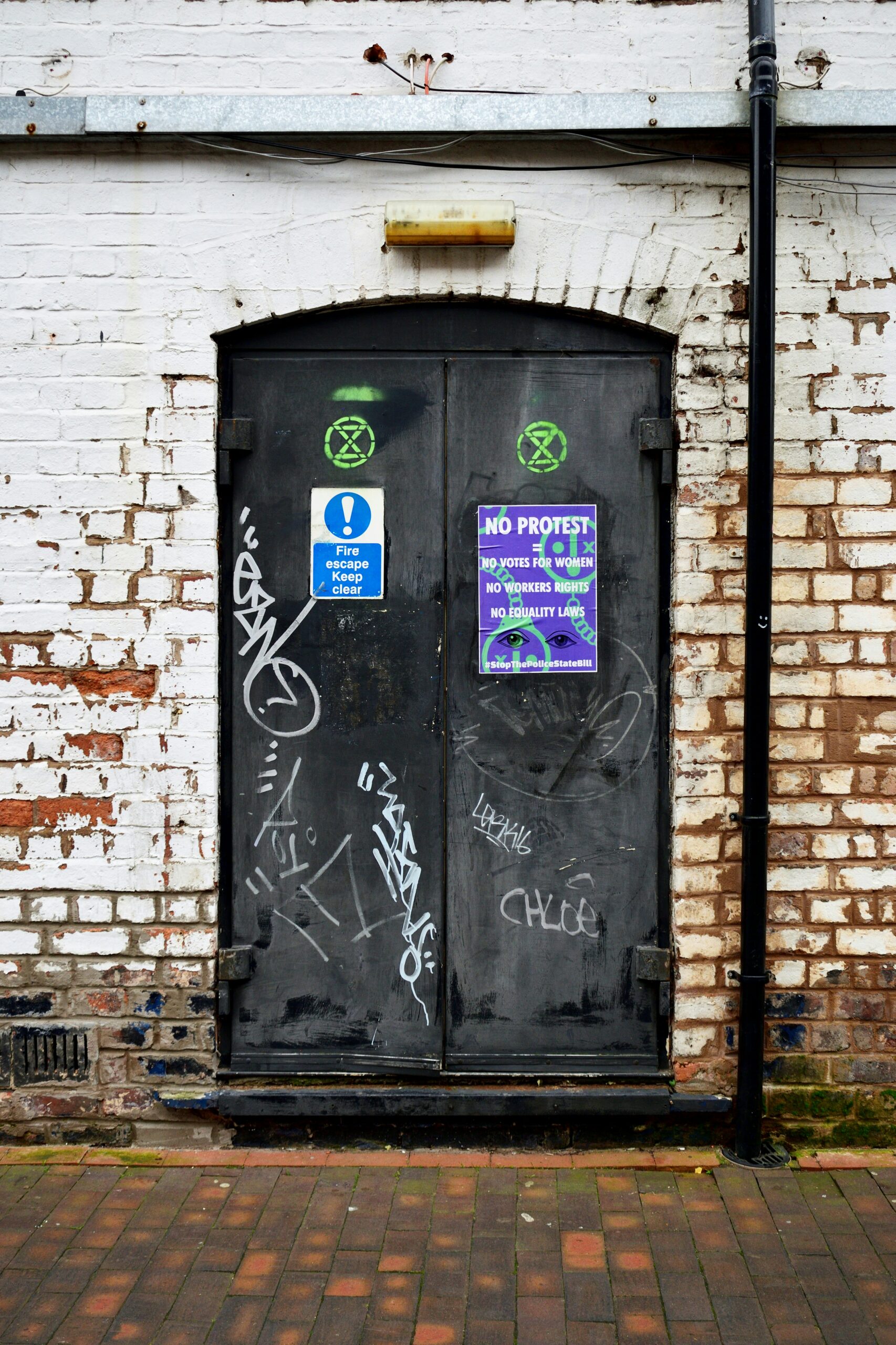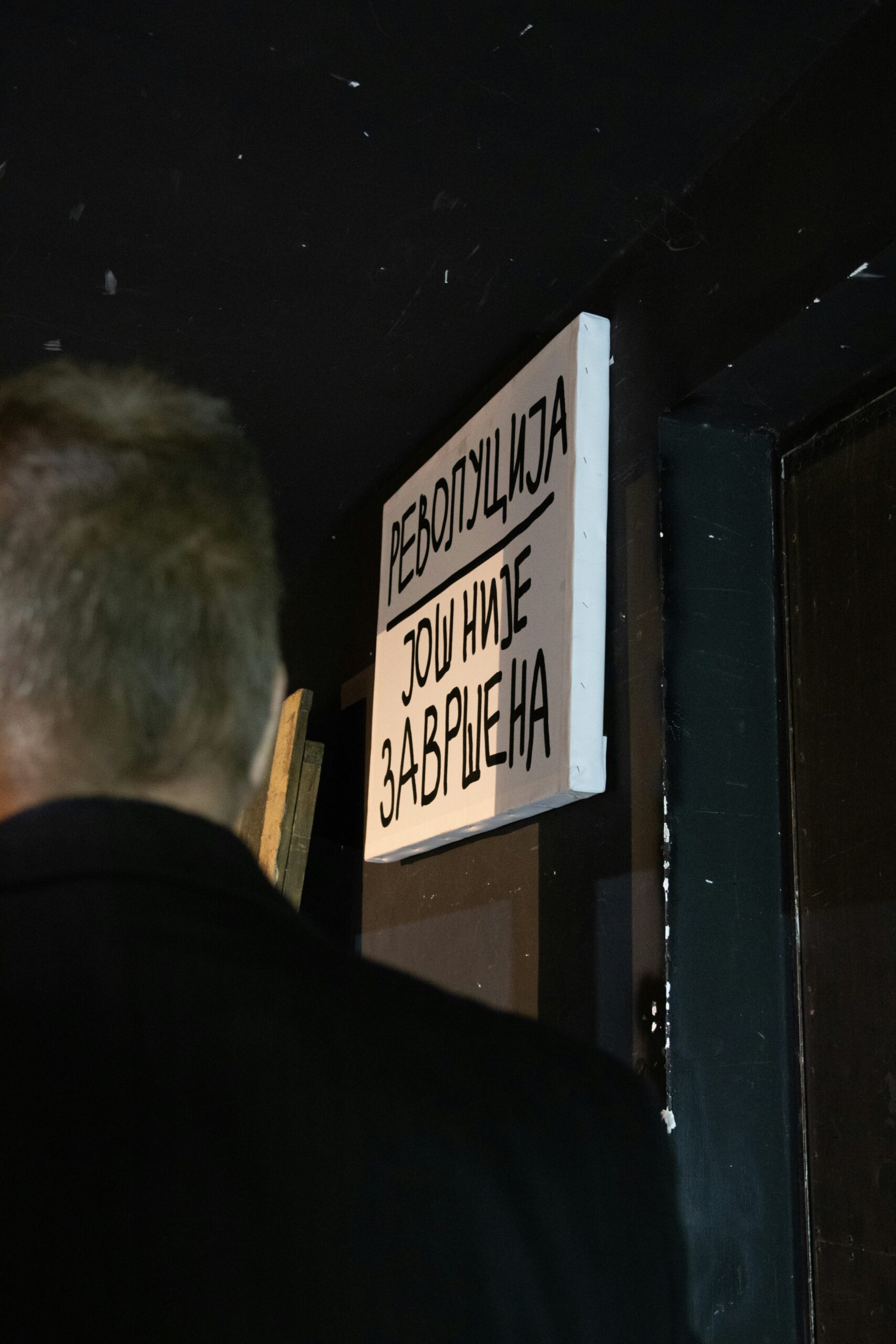“`html
Introduction
The Nottingham protests have garnered widespread attention recently, unfolding over several tumultuous days. The demonstrations began as a response to socio-political issues that have been simmering in the community for months. Nottingham, known for its vibrant history and diverse population, found itself transformed into an epicenter of civil unrest, mirroring similar events occurring globally.
On a fateful afternoon, tensions reached a boiling point when demonstrators clashed with law enforcement officials. The protests, initially peaceful, escalated quickly as conflicting agendas came into sharp focus. What started as a gathering to voice collective grievances morphed into scenes of chaos and disorder.
The primary motivating factors behind the protests include perceived injustices, demands for policy changes, and broader concerns regarding governance and societal equity. As protestors and police exchanged heated interactions, it became clear that the situation could no longer be contained without intervention. The scuffles led to numerous arrests, marking a significant turn in the evolving narrative of these demonstrations.
The incident of multiple arrests following the scuffles became a pivotal moment, highlighting both the volatile nature of mass protests and the law enforcement response. With several individuals detained, questions about the proportionality and justification of police actions have brought the protests to the forefront of public discourse.
This section sets the stage for a deeper analysis of the Nottingham protests in subsequent sections. By delving into the causes, events, and implications of these protests, a comprehensive understanding can be fostered, allowing for a more nuanced view of the complexities involved. It is within this framework that we proceed to explore the various dimensions of the Nottingham protests, investigating how they reflect broader societal dynamics.
Background of the Protests
The recent protests in Nottingham have their roots entrenched in a complex socio-political landscape. These demonstrations were largely driven by discontent with governmental policies and systemic issues that have increasingly been perceived as neglectful of marginalized communities. It is crucial to understand the broader context to fully appreciate the motivations behind such widespread public outcry.
Among the key catalyzing events was the introduction of controversial legislation that many viewed as an infringement on civil liberties. This legislative move was seen by activists as an immediate existential threat to freedom of expression and assembly. The policies in question primarily sought to clamp down on public gatherings, which, according to critics, would erode democratic rights. This fear galvanized several grassroots organizations into action, prompting them to organize and rally. These bodies included a combination of local advocacy groups, political activists, and civil rights organizations, all joining forces to call for a retracting of the proposed measures.
In addition, the economic hardships exacerbated by ongoing global challenges have added to the public’s frustration. The widening socioeconomic divide has left many feeling left behind, further fueling dissatisfaction. The protests represent a collective response to what these communities deem as systemic failures in addressing fundamental social welfare issues.
Moreover, a series of high-profile incidents involving police actions have further inflamed tensions. Accusations of excessive force and discriminatory practices have not only raised questions about law enforcement accountability but also amplified calls for comprehensive reforms. These incidents have formed a crucial backdrop to the protests, underscoring wider demands for justice and equity in law enforcement.
Groups such as Nottingham People’s Coalition and Justice for All have played pivotal roles in orchestrating the protests. Their mobilization efforts include organizing marches, public forums, and social media campaigns to raise awareness and garner broader support. Their aim is not simply to protest but to initiate a meaningful dialogue with policymakers for substantive change.
Chronology of Events
The Nottingham protests began as a peaceful demonstration around midday, with hundreds of citizens assembling in the city center. The initial gathering was marked by chants and banners, as protesters voiced their disapproval of recent governmental policies. By early afternoon, the crowd swelled, and the protestors made their way toward the main thoroughfare, aiming to amplify their message by marching through the heart of the city. Reports indicate that the atmosphere, although charged with emotion, remained largely orderly at this stage.
Around 2:00 PM, the situation began to escalate. Protesters encountered a substantial police presence which had been dispatched to manage crowd control and ensure public safety. Tensions mounted as the protestors attempted to navigate a police cordon obstructing their planned route. The standoff led to heated exchanges between demonstrators and law enforcement officials.
By mid-afternoon, pockets of scuffles erupted as a faction within the protest tried to breach the police lines. Authorities then resorted to imposing temporary roadblocks, intending to prevent further disorder. Consequentially, clashes intensified, with authorities employing crowd control measures including pepper spray and batons in an effort to disperse the more aggressive demonstrators.
The crescendo of the protests came at approximately 4:00 PM when a significant confrontation ensued, resulting in several arrests. Law enforcement officials detained individuals on charges of disorderly conduct and resisting arrest. In turn, the apprehensions sparked further dissent, with some demonstrators attempting to obstruct the police vehicles carrying the detainees.
As evening set in, the protest began to fizzle out, with demonstrators gradually disbanding and returning to their homes. The police maintained a heightened presence in the aftermath to deter any residual acts of unrest. Critical to this chronology is the notable interaction between the protesters and the police, which played a pivotal role in shaping the course of the day’s events.
The Role of Law Enforcement
The recent protests in Nottingham saw significant engagement from law enforcement agencies, aiming to maintain order and ensure public safety. The police were faced with the dual task of managing the large crowds while also protecting the rights of individuals to peacefully demonstrate. This complex scenario called for a balanced approach, and the strategies employed by the police were pivotal to the overall outcome of the event.
Officials from the Nottinghamshire Police have publicly addressed their approach, emphasizing the need to facilitate lawful, non-violent protests while taking decisive actions against any form of disorder or criminal activity. Before and during the protests, the police communicated clear guidelines to protestors, urging them to adhere to laws and maintain peaceful conduct. This preemptive communication aimed to mitigate potential conflicts and establish an understanding of acceptable behavior among the demonstrators.
During the event, law enforcement officers employed a range of crowd control techniques, including physical barriers and strategic positioning, to manage the flow of protestors. These methods aimed to prevent escalation and minimize disruptions to daily life in the city. Additionally, visible police presence served as a deterrent against potential violence or property damage.
However, the police actions have not been without controversy. Reports of several arrests have sparked discussions regarding the appropriateness of the force used. Some protestors and human rights organizations have accused the police of employing excessive force, claiming that peaceful demonstrators were unfairly targeted. In response, police officials have asserted that their actions were proportionate and necessary, given the circumstances.
These events highlight the challenging role of law enforcement in managing public protests, where the line between maintaining order and upholding democratic rights remains finely balanced. The statements and actions of the Nottinghamshire Police during these protests serve as critical points of analysis for understanding the overall dynamics and outcomes of such public gatherings.
Arrests and Legal Actions
During the recent Nottingham protests, law enforcement officials conducted several arrests in the wake of heightened unrest and public agitation. According to the police reports, a total of 27 individuals were taken into custody. These arrests stem from various infractions, including public disorder, assaulting officers, and vandalism. Among the detained, a substantial portion were young adults, highlighting a generational involvement in the movement.
The charges faced by the arrested individuals are diverse. A significant number are charged with misdemeanors related to disturbance of peace and obstructing police duties. However, a few are confronted with more grave accusations such as assault and criminal damage, which carry heavier penalties. The identities of the arrestees have not been fully disclosed, adhering to privacy regulations and ongoing investigations. Nevertheless, preliminary information suggests that the group comprises a wide cross-section of social backgrounds, hinting at the pervasive discontent driving these protests.
From a legal standpoint, those arrested during the Nottingham protests could face severe consequences depending upon the outcomes of their court proceedings. Typically, charges such as public disorder can result in fines or community service, whereas more serious offenses like assault on law enforcement personnel may lead to extended incarceration. Legal experts suggest that sentencing will hinge on the specifics of each case, including prior criminal records and the precise nature of the conduct during the protests.
The broader legal implications of these arrests also underscore a critical discourse around the balance between public dissent and lawful conduct. Nottingham’s authorities have reiterated their commitment to maintaining public order while respecting the right to peaceful protest. However, the legal outcomes of these actions may set pivotal precedents for how similar incidents will be managed in the future. As the judicial system navigates these cases, the intersection of justice and civil liberties will remain under scrutiny.
Reactions and Statements
The recent Nottingham protests have elicited a diverse range of reactions from various stakeholders, including protest organizers, participants, local authorities, and community leaders. In the aftermath of the scuffles and arrests, public statements have been issued that underscore distinct perspectives on the events that transpired.
Protest organizers have primarily expressed concerns regarding the conduct of the police. One of the spokespersons for the main organizing committee remarked, “We were committed to a peaceful demonstration. The actions of a few should not overshadow our cause. We expect a thorough investigation to ensure accountability on both sides.” This sentiment has been echoed by several participants who lament the escalation of tensions, emphasizing that their primary intention was to raise awareness on critical issues.
On the contrary, local authorities, including the Nottinghamshire Police, have defended their actions during the protests. A police representative emphasized, “Our primary duty is to ensure public safety and order. Unfortunately, when certain elements threatened that, we had no choice but to intervene. We remain committed to protecting the rights of peaceful protesters while maintaining law and order.” The police department has also assured the public that any allegations of misuse of force will be taken seriously and investigated appropriately.
Community leaders and local figures have also voiced their opinions. Nottingham City Council’s Head of Public Relations offered a balanced viewpoint, stating, “The right to protest is integral to our democratic society. However, it is equally important that such activities do not disrupt public order or safety. Dialogue and cooperation between all parties are essential to avoid future incidents.” Additionally, several local activists have called for a town hall meeting to address grievances, promote understanding, and facilitate constructive dialogue among the community.
These varied reactions underscore the complexities involved in the right to protest and the responsibilities that come with it. As Nottingham navigates the aftermath of these events, the focus remains on promoting peaceful engagement and ensuring justice and transparency for all parties involved.
Public and Media Response
The public and media response to the Nottingham protests has been a critical focal point, illustrating the broader societal impact of the events. Media outlets have treated the issue with significant coverage, emphasizing diverse narratives surrounding the protests and subsequent police actions. Major news organizations have published detailed accounts, shedding light on various aspects from peaceful demonstrations to moments of conflict.
Several media sources have reported extensively on the motives behind the protests, often highlighting the protesters’ calls for social justice and systemic change. For example, articles from prominent outlets like The Guardian and the BBC illustrated the tension between demonstrators and law enforcement, noting that the protests were largely peaceful until sporadic incidents sparked police intervention.
Public opinion, as reflected on social media platforms, has been equally divided. A scan of social media reactions reveals a tapestry of viewpoints. On one hand, supporters of the protests have utilized platforms such as Twitter and Facebook to voice their solidarity, citing the importance of civil liberties and the right to peaceful assembly. Posts from activists and sympathizers argue that the arrests exemplify excessive policing and raise serious questions about freedom of expression.
Conversely, there is a segment of the public that supports the police actions, believing them necessary to maintain order. Comment sections in news articles and online forums feature voices praising the police for their control and protection of public safety. This section of the populace emphasizes the need for balanced approaches in handling public demonstrations, asserting that while peaceful protests are a democratic right, disruptions and violence cannot be tolerated.
In analyzing the comprehensive media landscape, it becomes evident that the Nottingham protests have sparked a complex dialogue that traverses conventional societal lines. The multifaceted reactions highlight the contentious nature of the protests and the arrests, serving as a microcosm of broader debates on civil rights, law enforcement, and public order.
Conclusion and Future Implications
The Nottingham protests have highlighted crucial tensions between demonstrators and law enforcement agencies. Throughout this blog post, we’ve explored the central events leading up to the scuffles, the perspectives of protesters and police, as well as the immediate outcomes of the protests. It is evident that these events underscore a significant moment in the discourse surrounding civil liberties and law enforcement’s role in maintaining public order.
In analyzing the broader implications, it’s clear that the Nottingham protests could serve as a barometer for future demonstrations. The manner in which law enforcement agencies respond to such peaceful assemblies is likely to set precedents influencing subsequent interactions. On one hand, a more forceful approach might deter some from protesting; on the other hand, it could fuel frustration and result in larger, more defiant gatherings.
Another critical area affected by these events is the relationship between the police and community members. Incidents of conflict during protests can exacerbate feelings of distrust or animosity toward law enforcement. This strained relationship underscores the necessity for transparent communication and community engagement strategies, which could help mitigate misunderstandings and foster a collaborative environment.
Furthermore, these protests highlight potential gaps in current policies and practices within the realm of law enforcement. Policymakers may need to reassess existing frameworks to ensure a balance between maintaining public order and respecting the right to peaceful protest. This could involve revising guidelines on the use of force, enhancing police training programs, and implementing community policing models that prioritize dialogue and de-escalation techniques.
In essence, the Nottingham protests serve as a poignant reminder of the delicate balance between governance and civil liberty. As the landscape of public discourse continues to evolve, it becomes imperative for authorities to adapt in ways that uphold democratic principles while ensuring the safety and security of all citizens. The outcomes of these adjustments will not only shape future protests but also play a significant role in the broader social fabric of our communities.


